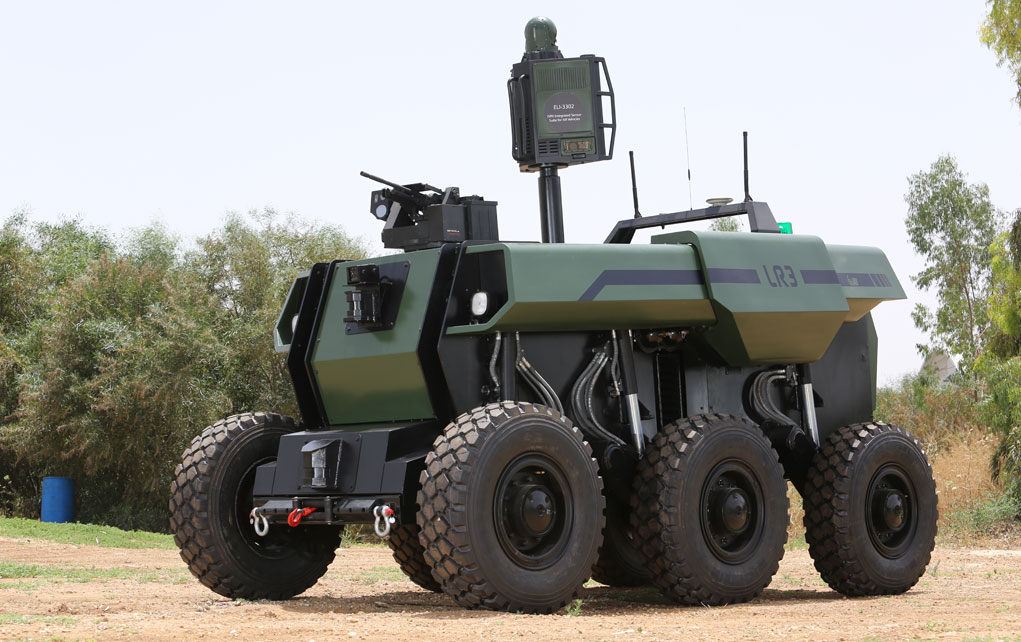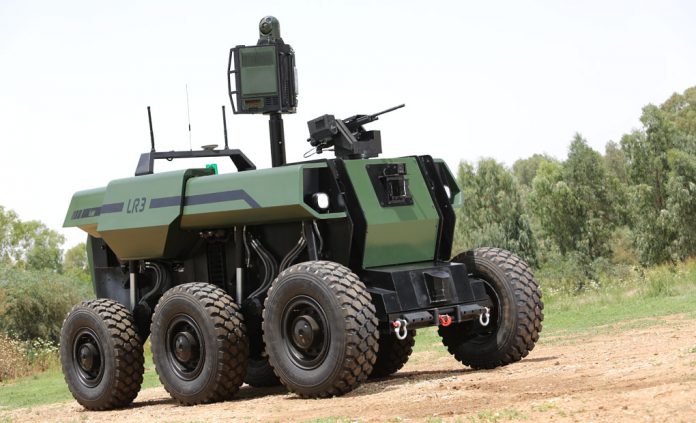IAI is introducing the RoBattle, a new combat robot it has developed. A member of a growing family of Unmanned Ground Vehicles (UGV) that evolved from the company’s robotics center in recent years. RoBattle will make its debut at the Eurosatory exhibition in France next week.
Designed for modern ground combat, RoBattle is built to operate independently or to support manned formations with the most dangerous, extreme tasks that soldiers had to do before. Performing armed scout and advance guard, ambush and attacks that ‘stimulate the area’, or penetrate deep into contested areas, including deception (acting as a decoy), RoBattle formations are also designed to gather intelligence and surveillance covertly, and assist convoy protection.
The combat ready RoBattle has a vehicle gross weight of seven tons, including three tons of payload. The diesel powered 6×6 articulated vehicle can also use tracks for improved all-terrain mobility.
As a combat-ready platform, RoBattle is designed to survivability to endure battle damage, provided with protection and redundancy for sensitive areas. The robot carries the ultra-light Pitbull – Remote Weapon Station (RWS) developed by General Robotics. The Pitbull weighs only 50 kg, and includes a set of sensors enabling operations in day, night and under limited visibility conditions,, providing the carrying platform advanced situational awareness and hostile fire indication, enabling the robot to respond effectively, in few seconds to threats around it, by maneuvering, deploying countermeasures or suppressive fire.

Other mission payloads include the Black Granite sensor sets, collecting battlefield intelligence (imaging sensors, radar, and COMINT), counter-IED systems that can detect explosive charges from a distance, manipulator arms handling such explosives, etc. The system builds around a new, modular robotic kit developed by IAI that comprises the vehicle control, perception means (sensors, including real-time mapping), navigation and path planning, mission management and decision support that are essential for the system’s autonomy. The system can be operated autonomously in several levels and be configured with wheels or tracks, to address operational needs.
Operators can equip RoBattle with different payloads including manipulator arms, Intelligence, Surveillance and Reconnaissance (ISR) sensors and radars, and remotely controlled weapons.
The system is designed to be integrated with tactical forces in mobile, dismounted operations and supports a broad range of missions including intelligence, surveillance, and armed reconnaissance; convoy protection, decoy, and ambush and attack.
The system design follows an open, modular ‘robotic kit’ methodology that enables the manufacturer and user to tailor the robot for various mission and system configurations. IAI equipped their new robot with advanced military-standard LTE network (Tac4G) providing consistent communications coverage across a wide area, with broadband connectivity supporting both control and sensor feeds. RoBattle is controlled from a tactical controller that is carried by operators operating from armored vehicles or dismounted. The operating console supports training mode, enabling affordable operator training and skills maintenance.
The new robot is the newest member of the growing family of Unmanned Ground Robotics Systems from IAI.





















